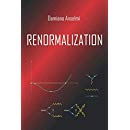Gauge theories
Let $S(\Phi,U,K,K_{U})$ denote the solution of the master equation $(S,S)=0$, where $\{\Phi ^{A},U\}$ are the fields and $\{K_{A},K_{U}\}$ are the sources coupled to the $\Phi ^{A}$- and $U$-gauge transformations. If we replace $U$ with the solution $U^{*}(\Phi ,K,K_{U})$ of the $U$-field equations
\begin{equation}
\frac{\delta _{r}S}{\delta U}=0,
\end{equation}
then the action
\begin{equation}
S^{*}(\Phi ,K,K_{U})=S(\Phi ,U^{*}(\Phi ,K,K_{U}),K,K_{U})
\end{equation}
satisfies the master equation $(S^{*},S^{*})=0$ in the reduced set of fields and sources $\Phi,K$.
We classify the local, polynomial, unitary gauge theories that violate Lorentz symmetry explicitly at high energies and are renormalizable by weighted power counting. We study the structure of such theories and prove that renormalization does not generate higher time derivatives. We work out the conditions to renormalize vertices that are usually non-renormalizable, such as the two scalar-two fermion interactions and the four fermion interactions. A number of four dimensional examples are presented.
Annals Phys. 324 (2009) 1058-1077 | DOI: 10.1016/j.aop.2008.12.007
arXiv:0808.3474 [hep-th]
We construct local, unitary gauge theories that violate Lorentz symmetry explicitly at high energies and are renormalizable by weighted power counting. They contain higher space derivatives, which improve the behavior of propagators at large momenta, but no higher time derivatives. We show that the regularity of the gauge-field propagator privileges a particular spacetime breaking, the one into into space and time. We then concentrate on the simplest class of models, study four dimensional examples and discuss a number of issues that arise in our approach, such as the low-energy recovery of Lorentz invariance.
Annals Phys. 324 (2009) 874-896 | DOI: 10.1016/j.aop.2008.12.005
arXiv:0808.3470 [hep-th]
We go on in the program of investigating the removal of divergences of a generical quantum gauge field theory, in the context of the Batalin-Vilkovisky formalism. We extend to open gauge-algebrae a recently formulated algorithm, based on redefinitions $\delta\lambda$ of the parameters $\lambda$ of the classical Lagrangian and canonical transformations, by generalizing a well-known conjecture on the form of the divergent terms. We also show that it is possible to reach a complete control on the effects of the subtraction algorithm on the space $M_{gf}$ of the gauge-fixing parameters. A principal fiber bundle $E \rightarrow M_{gf}$ with a connection $\omega_1$ is defined, such that the canonical transformations are gauge transformations for $\omega_1$. This provides an intuitive geometrical description of the fact the on shell physical amplitudes cannot depend on $M_{gf}$. A geometrical description of the effect of the subtraction algorithm on the space $M_{ph}$ of the physical parameters lambda is also proposed. At the end, the full subtraction algorithm can be described as a series of diffeomorphisms on $M_{ph}$, orthogonal to $M_{gf}$ (under which the action transforms as a scalar), and gauge transformations on $E$. In this geometrical context, a suitable concept of predictivity is formulated. We give some examples of (unphysical) toy models that satisfy this requirement, though being neither power counting renormalizable, nor finite.
Class.Quant.Grav. 12 (1995) 319-350 | DOI: 10.1088/0264-9381/12/2/005
We consider the problem of removing the divergences in an arbitrary gauge-field theory (possibly nonrenormalizable). We show that this can be achieved by performing, order by order in the loop expansion, a redefinition of some parameters (possibly infinitely many) and a canonical transformation (in the sense of Batalin and Vilkovisky) of fields and BRS sources. Gauge-invariance is turned into a suitable quantum generalization of BRS-invariance. We define quantum observables and study their properties. We apply the result to renormalizable gauge-field theories that are gauge-fixed with a nonrenormalizable gauge-fixing and prove that their predictivity is retained. A corollary is that topological field theories are predictive. Analogies and differences with the formalisms of classical and quantum mechanics are pointed out.
Class.Quant.Grav. 11 (1994) 2181-2204 | DOI: 10.1088/0264-9381/11/9/005

 Quantum Gravity
Quantum Gravity 


